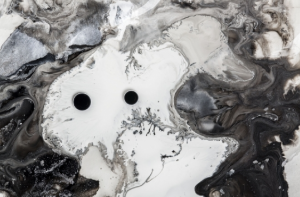Manual De Landa discussed the genesis of form according to the philosophical approach of Gilles Deleuze .For Manual De Landa , Deleuze believes that genesis of forms was found according to the boundaries and opportunities of external physical forces .So for Deleuze the problem was that the western philosophy conceptions of matter is wrong in terms of believing that form has no forces from the inside and they only come from outside .Deleuze approach is a combination of a physical and mathematical oriented to understand and disintegrate the virtual form.
For Deleuza mathmetics was what gives the shape of the form that you can study if you put in a grid that the form itself lies in it. Landa mentioned that Deleuze take from thermodynamics keys concepts needed for a theory of immanent morphogenesis. This difference in intensity creates or gives creation of two basic types of structures; Strata which is the articulation of homogeneous elements like trees as well as self-consistent aggregates like articulation of heterogeneous element (rhizomatic structure) and both results in isomorphic actual forms.
Deleuze also talks about the virtual potentiality versus the actual result (Virtual VS Actual) and believes that what differentiates between the possible and real is a set of predefined forms that acquire physical reality as material forms.
Deleuze approach introduce a new challenge in a postmodern coherence between science and art , parametrics as new architectural style where art is derived by calculations and methodological visions and where calculations and physics-logic can lead to creation of the complex forms . And obviously, what we are witnessing today with the all technological development in terms of of the use of all soft wares that mostly depend on mathematical and physical formulas and that are all basis for creating most difficult designs.

